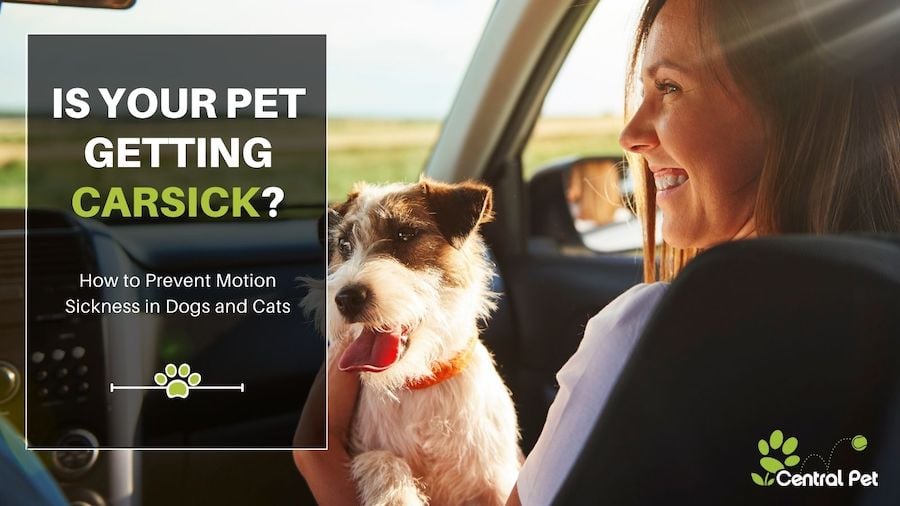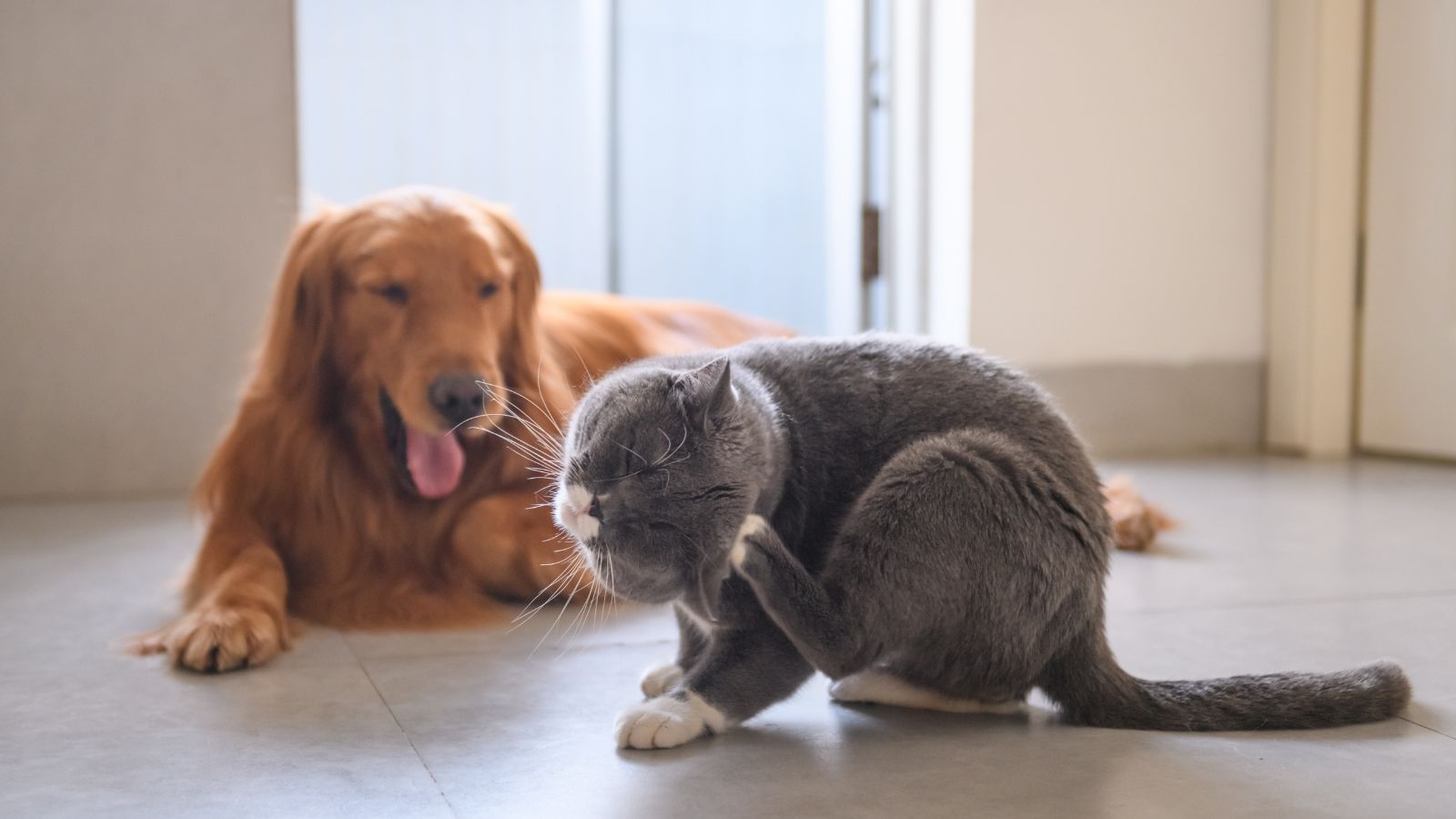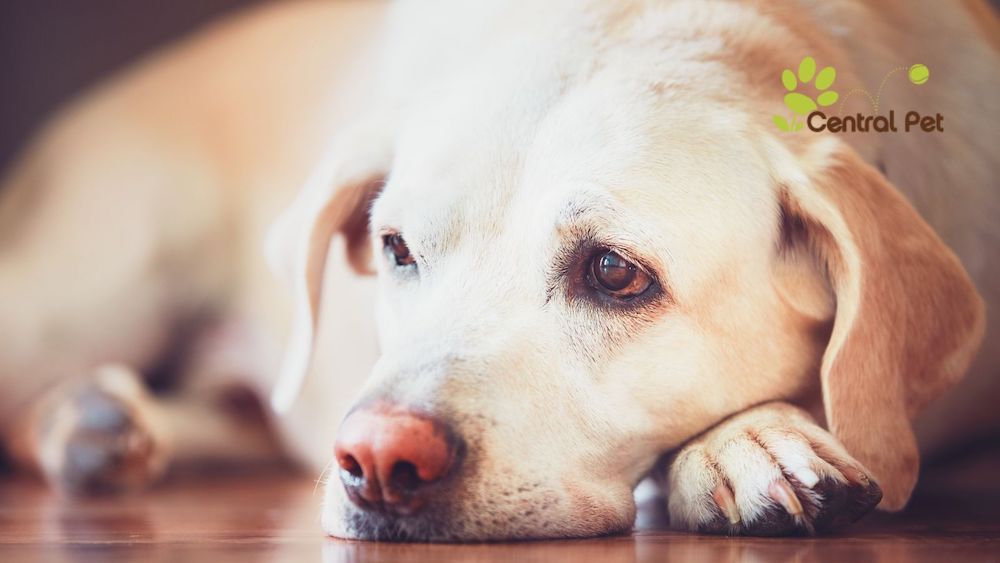Motion sickness is not just an annoyance that affects humans. Did you know your dog and cat can get carsick too?
When you're driving, your pet gets moved back and forth, sometimes suddenly. It’s a good idea to have your pet in a crate or secured in a seat to help avoid too much movement or falling over. But even with that, the back-and-forth motion of the car can cause some animals to become motion sick.
Motion sickness can make it harder for you to travel with your pet. Fortunately, there are ways to help prevent motion sickness while traveling in a car.
How to Tell if Your Dog is Car Sick
There are a few ways to tell if your dog is experiencing motion sickness:
- Sluggishness. Being slow to respond to you and very sleepy
- Vomiting. This can be during the car ride or just after
- Trouble focusing on you when you talk to him
On top of these physical symptoms, there can be some behavioral changes:
- If your dog whines or howls more than usual during car rides, they may be trying to communicate feelings of distress
- They may stop eating even after the car ride
How to Tell if Your Cat is Car Sick
Your cat may be experiencing car sickness on a road trip if you notice unusual behaviors such as:
- Excessive lip licking
- Vomiting
- Drooling, sometimes excessively so that it seems to be foaming
- Meowing excessively (although some cats do that if they’re in the crate and can’t get to their loved ones)
- Struggling to exit the carrier or the car
In severe cases, your cat may even become lethargic or have diarrhea.
Treating Your Pet's Car Sickness
Don't let your pet suffer from motion sickness any longer! It will make car rides much more pleasant for everyone! Below are a few ways to treat motion sickness in pets.
1. Pull Over and Give Your Pet Time Outside
Just like humans, sometimes we need a reset to make the motion sickness go away. This means getting out of the car, breathing some fresh air, and simply stopping the motion of the car for a bit. Try to stop as soon as possible to help prevent vomiting (or more vomiting) and other signs of car sickness.
2. While Driving, Keep Air Flowing
Fresh air is a good idea before they get sick, but if you notice the signs of car sickness, it’s time to get air moving in the car. If it’s too hot to keep the windows down, like it often is in Arizona, crank up the AC and the fan so they don’t get overheated and can feel the breeze.
3. Secure Your Pet and Give Them a Front Window View
If you’ve ever been carsick, you may know that watching the world go by at 65MPH from a side window is blurry and uncomfortable for your eyes. Dogs and cats can experience the same thing! Try to put your pet in the middle seat, using a pet harness that keeps them from moving around too much inside the car. The secure feeling of the harness and seeing what’s ahead can keep pet tummies from getting queasy. This might be harder to do with a small dog or a cat. But at a minimum, try to give them a secure place to sit where they can look somewhere other than the side window.
4. Medicate to Reduce Pet Car Sickness
An alternative option to treat motion sickness is to medicate your pet before it gets sick. Talk to your vet about medications that are available and the correct dosage for your pet to help prevent motion sickness from starting.
Helping Your Pet Prepare for Car Rides
A good place to start with preventing car sickness in pets is to desensitize or get your pet used to traveling in a car. Begin by placing your dog or cat in the car, turning on the motor, and sitting there without moving for a few minutes. Repeat this the next day, but try moving the car for a brief ride, like backing out of the driveway and back. Try this process again over the next few days, and as they become more comfortable with car rides, take them on short trips around town or your neighborhood. This will help them become accustomed to being in a moving vehicle before taking longer trips. Make sure to praise your pet and offer a food reward for good behavior. If they don't travel well at first, don't push it—they could get sick and develop a lifelong fear of cars.
Another important tip is to avoid feeding them too much before they go in the car. This may seem obvious because you don’t want accidents in the car, but it’s especially important if they get car sick. Try a small meal or snack before heading out to keep their stomach from feeling queasy. Then wait 30-60 minutes before leaving.
You may also be interested in our checklist for pet parents traveling with their dog.
What To Do If You Can’t Travel With Your Pet
We hope traveling with your pet with these tips is memorable, not miserable. If you've done what you can to make the car riding experience positive for your pets, but they just aren't feeling good when riding along, try to minimize their travel. Boarding services for overnight stays are a good idea at places such as Central Pet in Tucson, where your dog or cat can enjoy a safe space with human interaction. Or, if you’re mostly gone during the daytime and returning home in the evenings, doggie daycare is a great option to help your dog socialize while you get your travel around town knocked out. Kitties may be happier at home if they get sick during rides when you’re only gone for the day.
We hope you have safe and pleasant travels. And if you’re in the Tucson area and need help with boarding or daycare, please let us know.





